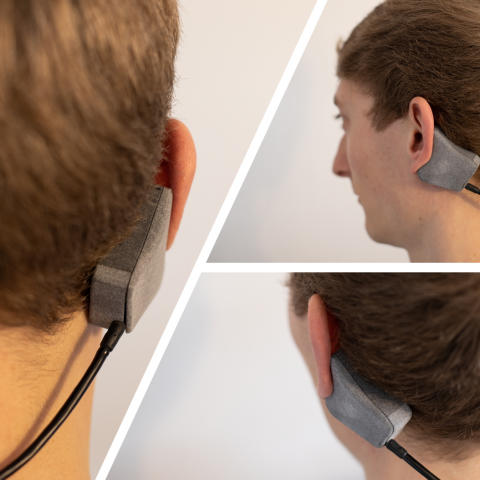Help with Undine Syndrome
Undine syndrome is a congenital disorder in which sufferers have inadequate respiratory drive. If the concentration of CO2 in the body is too high, the breathing reflex is triggered in healthy people. In those affected by undine, the lack of this reflex leads to insufficient breathing or even breathing pauses, as a result of which the CO2 concentration continues to rise and causes anesthesia. Without a wake-up stimulus or ventilation, this CO2 anesthesia leads to death.
Those affected can therefore only sleep if they are ventilated and monitored, which requires an extremely regulated life with a fixed sleep rhythm. For teenagers and young adults in particular, rigid bedtimes are extremely difficult to accept. Currently, a seated guard is required to monitor sleep at night and intervene promptly if necessary. Those affected should not sleep uncontrollably during the day.
In order to increase the independence of those affected by Undine from the pre-adolescent age onwards, they need the possibility of dozing or sleeping alone and of being woken up without nursing staff when the oxygen saturation falls. A wake-up function must exist both under ventilation in bed and while dozing without ventilation.
The self-help group Undine Syndrome e.V. approached the Eva Mayr-Stihl Foundation with the request to support a project of the Institute for Medical Technology at the University of Stuttgart. A device should be developed that, on the one hand, can reliably measure oxygen saturation and, on the other hand, includes an alarm function that reliably wakes up those affected without startling them or those around them. Particular attention had to be paid to operational safety, ergonomics and suitability for everyday use. The system had to be portable and mobile.
The Institute for Medical Technology involved the self-help group and its members in the development right from the start. The best solution currently seems to be a system that can be worn behind the ear, because this is where the oxygen content can be measured very well, and at the same time an inconspicuous but reliable alarm function is technically easy to implement. The first prototypes are promising, the project was completed positively. A larger-scale user study is now to be carried out - "larger" in this context meaning ten participants. This number alone makes cooperation with the self-help group in neighboring France necessary.
Undine Syndrome is an extremely rare disease. According to the self-help group Undine Syndrome e.V., a little over 100 people of all age groups are affected in Germany, which corresponds to an incidence of around 1:800,000.
